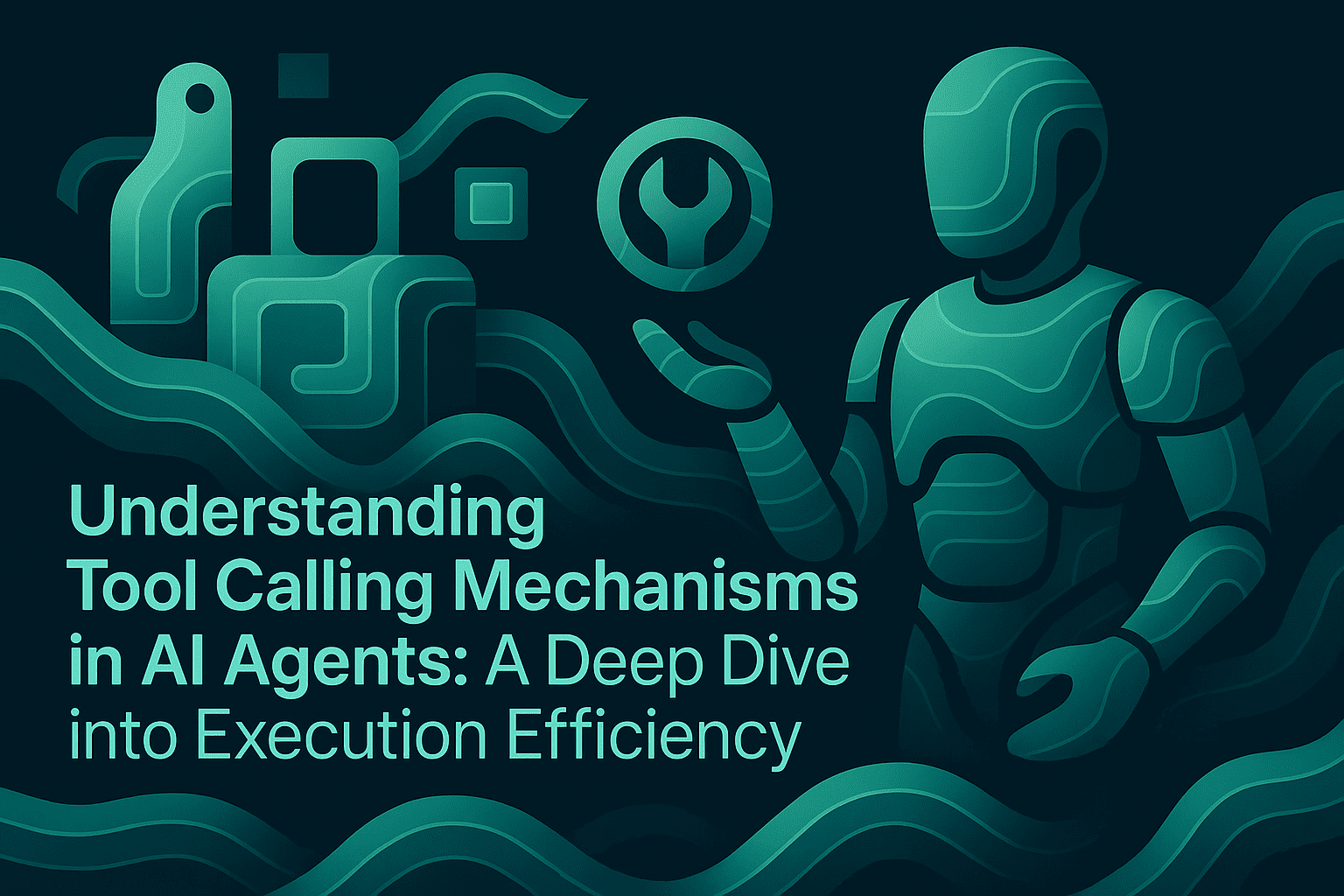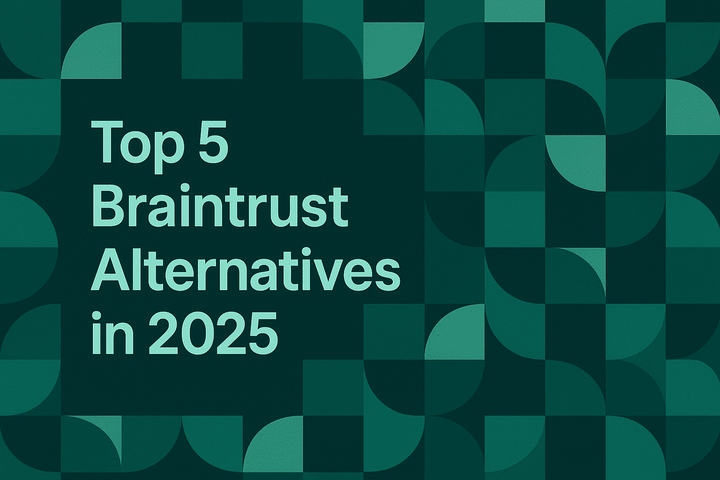Understanding Tool Calling Mechanisms in AI Agents: A Deep Dive into Execution Efficiency

TL;DR
Tool calling enables AI agents to invoke external capabilities APIs, databases, search, and workflows during inference. Efficient execution depends on deterministic planning, low-latency routing, robust observability, and evaluations that quantify correctness and cost. Engineering teams should standardize on an AI gateway with distributed tracing, semantic caching, failover, and governance; pair this with pre-release simulations and in-production observability to ensure reliable, scalable agent behavior. Use structured schemas, measurable evals, and prompt versioning to drive continuous improvement.
Understanding Tool Calling in AI Agents
Tool calling is the mechanism by which an AI agent decides to use external tools—functions, APIs, databases, or retrieval pipelines—while solving a task. In modern systems, this spans:
- Function calling within model APIs.
- Retrieval-Augmented Generation (RAG) pipelines for grounded responses.
- Orchestrated multi-step plans across services.
- Voice agents invoking ASR/TTS, search, and business logic.
Maxim AI’s full-stack approach addresses this lifecycle end-to-end: experimentation, simulation, evaluation, observability, and data curation for multimodal agents, reducing time-to-reliability by more than fivefold. For experimentation and prompt engineering, see the Playground++ on the product page: Experimentation & Prompt Engineering. For agent-level simulation and evaluation, review Agent Simulation & Evaluation. Operational reliability is anchored by Agent Observability.
Execution Efficiency: From Plan to Trace
Efficient tool calling blends planning, routing, and measurement:
- Planning: Break tasks into steps with clear preconditions and expected outputs.
- Routing: Select models/tools with the right cost-latency-quality tradeoffs.
- Measurement: Trace spans, evaluate correctness, and record decisions.
Bifrost, Maxim AI’s LLM gateway, centralizes execution via a single OpenAI-compatible API, multi-provider support, and enterprise-grade controls. It enables:
- Unified interface: Standardized function/tool schemas across providers. See Unified Interface.
- Automatic fallbacks and load balancing: Seamless failover to alternate models/providers if an endpoint degrades. See Automatic Fallbacks.
- Semantic caching: Reuse responses when queries are semantically similar, lowering latency and cost. See Semantic Caching.
- Observability and governance: Distributed tracing, Prometheus metrics, rate limits, and access controls. See Observability and Governance & Budget Management.
These capabilities reduce tool invocation overhead while preserving reliability, making the gateway a critical component for agent execution efficiency.
Designing Robust Tool Schemas and Routing Policies
Well-structured tool schemas and routing policies align agent decisions with business constraints:
- Clear input/output contracts: Define types, preconditions, and error modes.
- Deterministic fallbacks: Prefer known-good routes when uncertainty is high.
- Cost-aware selection: Use provider/model metadata and budgets to constrain spend.
- Latency targets: Bound response times; trigger fallbacks if exceeded.
- Access control: Enforce role-based permissions and API key vaulting.
With Bifrost, teams configure providers and routing without code changes using the drop-in replacement and zero-config startup patterns. See Drop-in Replacement and Zero-Config Startup. For multi-provider routing and dynamic configuration, review Provider Configuration. For secure key management, see Vault Support.
Pair these gateway policies with Maxim’s prompt management and versioning in Experimentation to compare output quality, cost, and latency across prompts, models, and parameters. Reference: Experimentation & Prompt Versioning.
Tracing, Evaluations, and Observability for Tool Calls
Execution efficiency is only meaningful when measured. Adopt distributed tracing, granular evals, and production observability:
- Distributed tracing: Capture sessions, traces, and spans for each tool call, including inputs, outputs, latency, and errors.
- Evals across levels: Apply evaluators at session, trace, or span level—deterministic, statistical, and LLM-as-a-judge—plus human review for nuanced cases. See Agent Simulation & Evaluation.
- In-production quality checks: Run automated evaluations on live logs to surface regressions early. See Agent Observability.
- Custom dashboards: Build cross-cutting views over agent behavior for root-cause analysis and optimization. See Agent Observability.
For gateway-side telemetry, Bifrost exposes Prometheus metrics, comprehensive logging, and distributed tracing, enabling deep insight into tool performance and routing health. See Observability. Budget governance aligns with organizational controls: Budget & Teams.
Simulation: Pre-Release Stress-Testing of Tool Strategies
Before shipping, simulate diverse scenarios and user personas to validate tool calling:
- Conversation trajectory analysis: Confirm agents choose correct tools and complete tasks.
- Reproducibility: Re-run from any step to isolate failures and validate fixes.
- Scenario coverage: Include edge cases, degraded providers, rate limits, and noisy inputs.
Maxim’s simulation suite provides this at scale: Agent Simulation & Evaluation. Combine with data curation workflows to build high-quality datasets and evolve them from production logs and evaluation feedback—supporting continuous improvement and fine-tuning.
RAG Tooling: Grounded Responses with Minimal Overhead
When tool calling includes RAG, efficiency depends on:
- Index quality: Deduplication, chunking, and metadata-rich embeddings.
- Caching layers: Semantic caching to avoid redundant retrievals.
- Governance: Track source citations and enforce domain whitelists.
Bifrost’s semantic caching reduces repeated calls for similar queries, while Maxim’s observability and evals quantify answer correctness and hallucination rates across RAG spans. See Semantic Caching and Agent Observability.
Voice Agents: End-to-End Tool Chains under Latency Constraints
Voice agents require tight coordination of ASR, NLU, tool calling, and TTS:
- Low-latency streaming: Maintain conversational cadence with streaming interfaces.
- Robust fallbacks: Switch ASR/TTS providers when quality dips.
- Span-level evals: Measure intelligibility, intent correctness, and tool success rates.
Bifrost supports multimodal streaming across text, images, audio behind a common interface. See Multimodal & Streaming. Use Maxim’s production alerts and trace inspection to address live voice quality issues rapidly: Agent Observability.
Model Context Protocol (MCP): Tool Access Beyond Simple Calls
As agents grow, they need controlled access to external systems:
- Filesystem, web search, databases: Expose capabilities via standardized context tools.
- Safety and governance: Enforce permission boundaries and audit access.
- Extensibility: Add custom middleware for analytics and business rules.
Bifrost’s Model Context Protocol (MCP) lets models safely use external tools through a unified abstraction layer, improving flexibility without sacrificing control. See Model Context Protocol. Enterprises can add custom plugins for analytics and monitoring: Custom Plugins.
Putting It All Together: A Practical Blueprint
To achieve execution efficiency in tool calling:
- Adopt an LLM gateway for unified APIs, failover, caching, and governance. Start with Bifrost’s Unified Interface and Automatic Fallbacks.
- Instrument agents with distributed tracing and evals at multiple levels. Use Maxim’s Agent Observability and Agent Simulation & Evaluation.
- Standardize prompt versioning and routing policies that balance cost, latency, and quality. See Experimentation & Prompt Engineering.
- Leverage semantic caching for RAG and FAQ-like interactions, and enable MCP for controlled external tool access. See Semantic Caching and MCP.
- Govern spend and access with budget management, SSO, and vault-backed keys. See Governance, SSO Integration, and Vault Support.
Conclusion
Execution efficiency in tool calling is a systemic outcome—good schemas, smart routing, rich telemetry, and rigorous evaluations. With Bifrost’s unified gateway and Maxim’s lifecycle platform, teams can scale agents confidently across modalities and providers, while maintaining strong governance and observability. This reduces incident rates, improves user experience, and accelerates iteration without sacrificing reliability.


